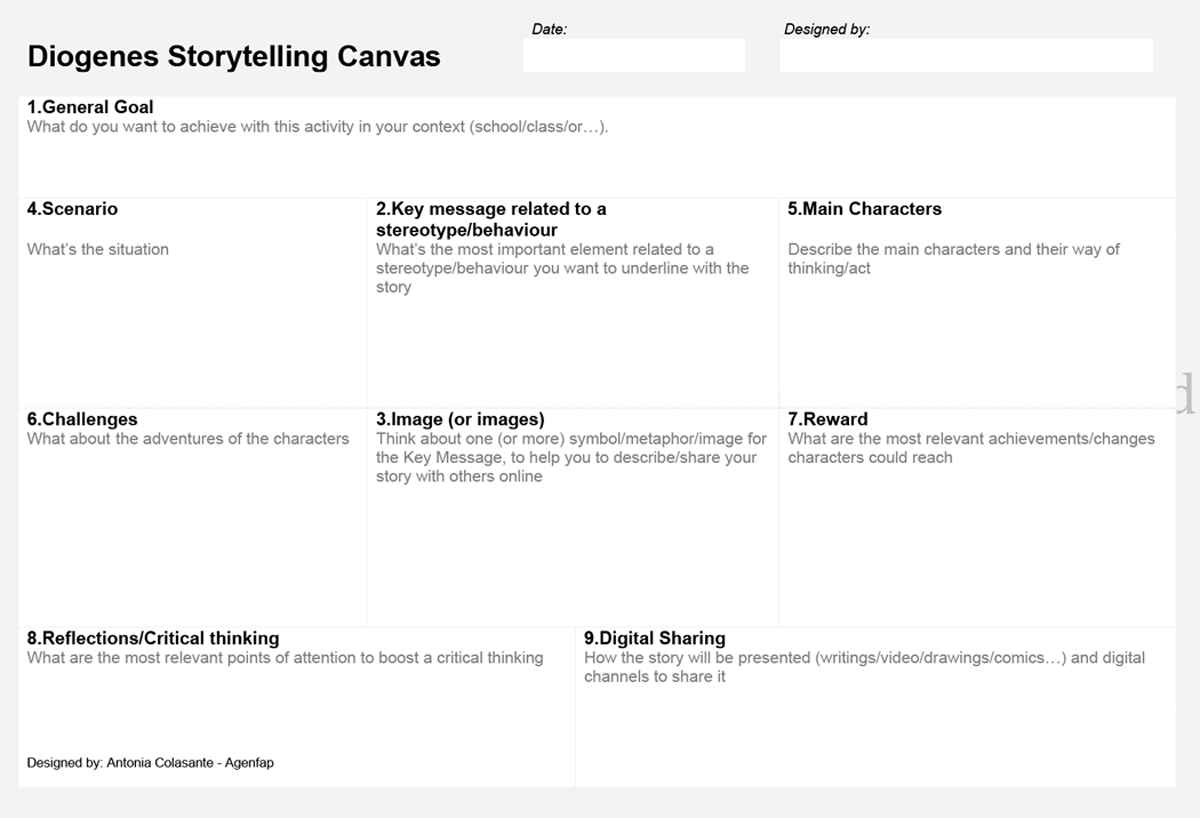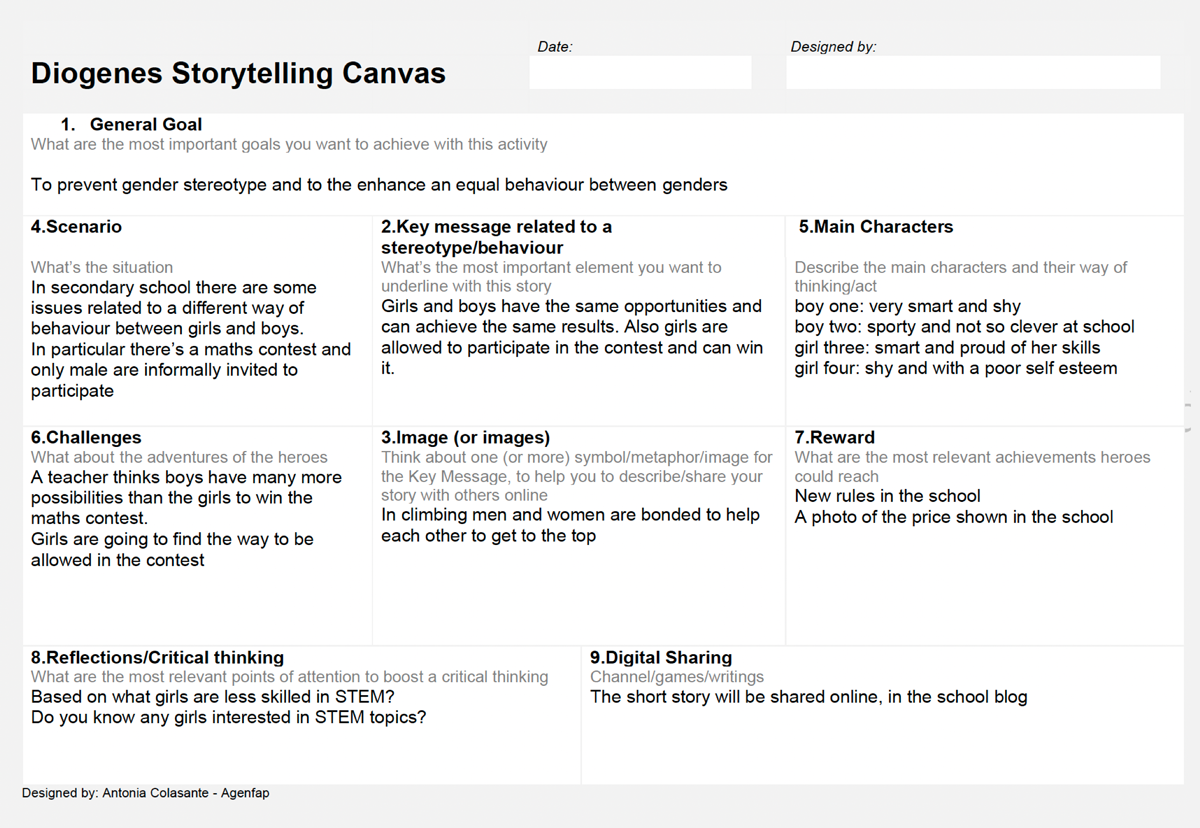Resources for Teachers
Digital Storytelling Laboratories
Why teachers use them: to support class to overcome or prevent stereotypes.
How they work: to involve the class with a powerful tool for reflections.
What teachers expect: awareness, a Critical Thinking approach and the opportunity to spread stories online.
STEP A
Prepare the Canvas with the main elements.
STEP B
Invite students to write a story, using only some of the boxes.
STEP C
Share the “questions” in the box related to critical thinking and invite students to write a new story.
STEP D
Share the reflections on stereotype and the new story online to reach a bigger audience.
Diogenes Storytelling Canvas
There’s a preliminary work for the teacher, which is focused filling in the Canvas.

This activity is important for the teacher to:
- Focus the goal to achieve and the kind of stereotype: are there any situation/relationships/discussions in which gender stereotypes are already seen?
- Design the process of the activity: time (how long is the lab, it’s an in-class activity or not).
- Collect all the information to give to the class to let them start with the writing lab. How many details the teacher wants to give to the students is related to her/his own evaluation.
- List the potential critical thinking questions to support the class to overcome the gender stereotypes.

How to
Brand Storytelling
1. General Goal
What do you want to achieve with this activity in your context (school/class/or…).
1. The box General goal
Here the focus in on the stereotype: what kind of stereotype, in which kind of situation it happens. So this is the reason why we want to use this kind of laboratory.
Critical Thinking and Diogenes
Few notes for teachers regarding the Digital Storytelling Laboratory
2. Key message related to a stereotype/behaviour
What’s the most important element related to a stereotype/behaviour you want to underline with the story
2. The key message
This box underlines the most relevant elements the teacher expects students will learn from the activity.
Gender Stereotypes and education
This video is focused on the Brand Storytelling (Critical thinking approach – The topic related to the Gender Stereotypes) as applied in the project activities.
3. Image (or images)
Think about one (or more) symbol/metaphor/image for the Key Message, to help you to describe/share your story with others online.
3. The Metaphor
Here is a symbolic representation of the Key Message.
4. Scenario
What’s the situation.
4 to 7
From 4 to 7.
The main topic of the story related on a stereotype to overcome: scenario, heroes, challenges and reward.
5. Main Characters
What’s the most important element related to a stereotype/behaviour you want to underline with the story
Describe the main characters and their way of thinking/act.
6. Challenges
What about the adventures of the characters.
7. Reward
What are the most relevant achievements/changes characters could reach.
8. Reflections/Critical thinking
What are the most relevant points of attention to boost a critical thinking.
8. The Reflections/Critical thinking
This box gives the possibility to help guys with some “critical thinking questions” to reflect and rethink about what they have already done. The aim is to overwrite the first version of the story.
Online sources
Following these pages you will have a deepen understanding of the elements related to the critical thinking process. This is the most challenging part of our activities and we hope this website could be helpful for your work.
9. Digital Sharing
How the story will be presented (writings/video/drawings/comics…) and digital channels to share it.
9. Digital sharing
This box is focused on the process to share the story created in a digital way: blog, social network, newsletter…
